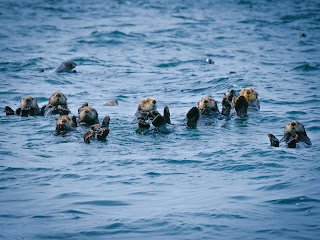What is a Keystone Species, and Why Does It Matter?
When we think about the natural world, we often imagine a web of interconnected life, where each species plays a role in maintaining the balance of an ecosystem. But did you know that some species are so vital that their presence (or absence) can dramatically alter the entire ecosystem? These are known as keystone species.
Understanding Keystone Species
A keystone species is one whose influence on an ecosystem is disproportionately large compared to its population size. The term was coined by ecologist Robert Paine in 1969, inspired by the keystone in an arch—the stone that holds all the others in place. If the keystone is removed, the entire structure can collapse. Similarly, if a keystone species disappears from an ecosystem, it can lead to significant changes, often resulting in the loss of other species and the degradation of the environment.
Types of Keystone Species
Keystone species come in many forms, including predators, herbivores, and even plants. Here are three primary types:
1. Predators: These species control the population of prey species, preventing them from becoming too numerous and consuming too much of the available resources. For example, wolves in Yellowstone National Park control the deer population, which in turn allows plants to thrive, benefiting the entire ecosystem.
2. Ecosystem Engineers: These species create, modify, or maintain habitats. Beavers, for instance, build dams that create wetlands, which are crucial habitats for many other species.
3. Mutualists: These species have mutually beneficial relationships with other species. For example, bees pollinate flowers, enabling plants to reproduce and providing food for countless other organisms.
Real-Life Examples
Sea Otters and Kelp Forests: Sea otters are a classic example of a keystone species. They feed on sea urchins, which, if left unchecked, can decimate kelp forests. Kelp forests are vital to the marine ecosystem, providing food and shelter for many species. Without sea otters, these underwater forests would disappear, and the ecosystem would suffer.
African Elephants: In African savannas, elephants act as ecosystem engineers. They knock down trees, which creates open grasslands for other species to thrive. Without elephants, the landscape would be overrun by trees, drastically changing the habitat.
Keystone Species in Our Self-Sustainable City Project
In our self-sustainable city project, understanding and integrating the concept of keystone species is crucial. By fostering environments that support keystone species, we can ensure the long-term health and balance of the ecosystems within our city. For instance, planting native trees that support local pollinators, like bees, can help maintain the biodiversity that is essential for a thriving, self-sustaining community.
By preserving or even reintroducing keystone species into our urban ecosystems, we can create green spaces that are not only beautiful but also resilient and sustainable. This approach will help us maintain a balance between human development and nature, ensuring that our city remains in harmony with the environment.
Join the Conversation
Keystone species are a fascinating and vital part of our natural world, and their role in sustainability cannot be overstated. Do you have any questions or thoughts about keystone species and their impact on ecosystems? Share them in the comments below—we'd love to hear from you!
![Self-Sustainable City - Ramakrishna Surathu [Official Website]](https://blogger.googleusercontent.com/img/a/AVvXsEivh2bAyNCG-DxYf4p_lHLcFQx1i8MvbBv91UgzKqAFrNMhT8xW-fwxgNJTdtojgb9aYXiG9EdNYLo8tNmtaakyq-zmnaCeeUGMdpvJ8iOaVzd2tSKEC2UrUXzFJa952LPF-OngfPenpbFOj7b8AcbYtPGSng6xbGr-_NwEIRpXZg_QdKLGRMGeg5pWmtaQ=s1280)

What a great article! I never realized just how crucial keystone species are to the health of our ecosystems. It’s amazing to think that the absence of one species, like sea otters or elephants, can lead to such drastic changes in the environment. I especially appreciate how you connected this concept to your self-sustainable city project. Fostering keystone species and creating green spaces will not only enhance biodiversity but also ensure a harmonious balance between nature and urban development. I’m excited to see how this approach can inspire sustainable living in our communities! Thank you for shedding light on this important topic!
ReplyDelete